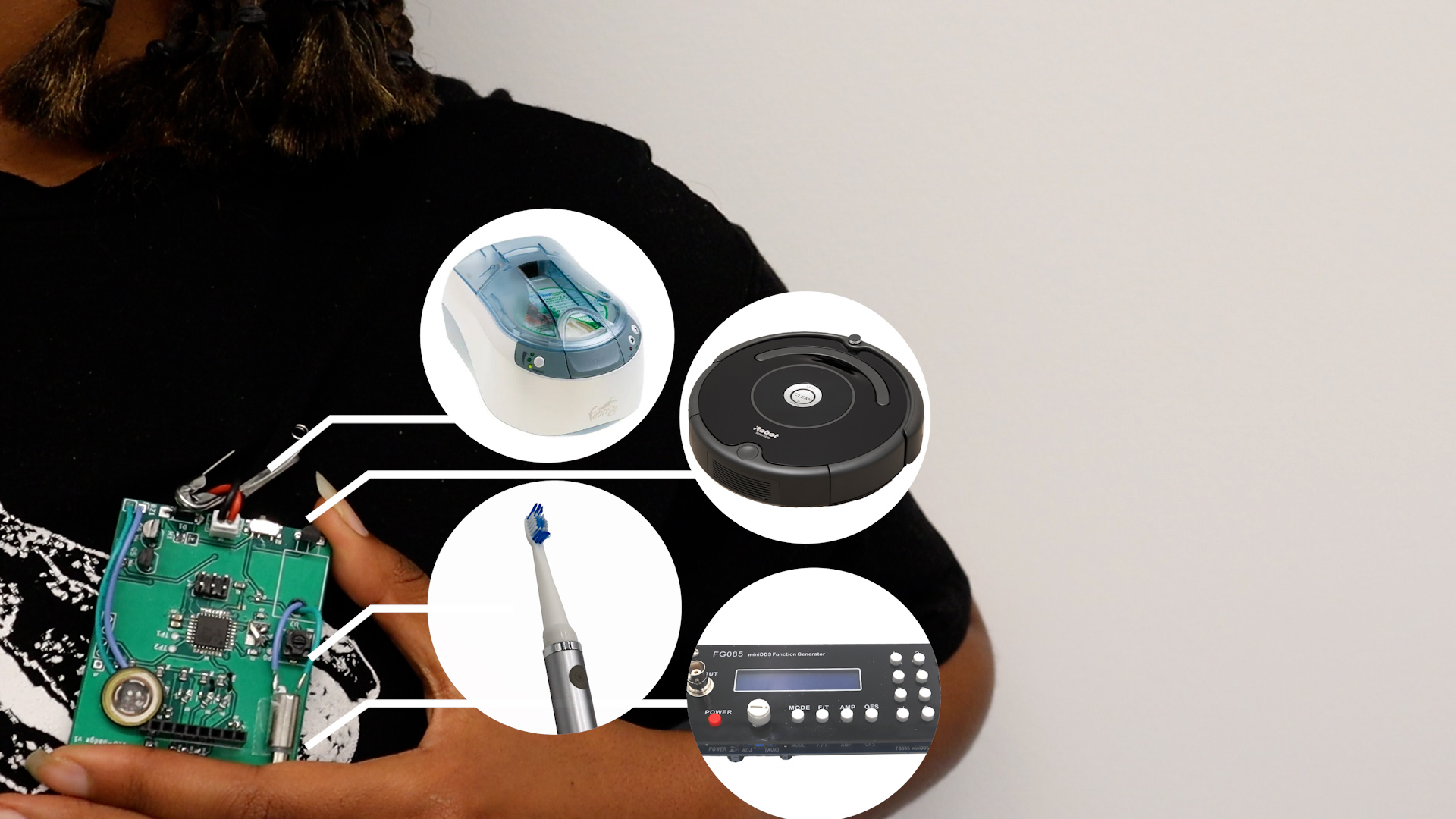JASMINE LU 🌱
is a Human Computer Interaction researcher and PhD student supported by the NSF Graduate Research Fellowship and UChicago Computer Science Liew Family Fellowship. She is a part of the Human Computer Integration Lab and is advised by Pedro Lopes. Through her work, she explores how we might build the future of interactive technologies to be more sustainable and center ecological thinking. Her research interests include e-waste, critical making, sustainable interaction design, and living media interfaces.
Jasmine’s most recent work, ecoEDA: Recycling E-Waste During Electronics Design, is published in the User Interface Software and Technology (UIST) ‘23 proceedings. In it, she explores how we could facilitate recycling electronic components from e-waste during the process of designing new electronic projects.
Her work has been covered by the The New Scientist, Forbes, Gizmodo, UChicago News, Nerdist, Communications of the ACM, and more.
CV | Email | Twitter
Read more in ‘About Me’Publications

ecoEDA: Recycling E-Waste During Electronics Design.
Jasmine Lu, Beza Desta, K D Wu, Romain Nith, Joyce Passananti, Pedro Lopes. In Proc. User Interface Software and Technology (UIST) ’23.🏅Honorable Mention
[ paper ] [ video ]
E-Waste is the fastest growing consumer waste-stream in the world. Inside any device that might typically become e-waste, one can find dozens to hundreds of reusable components. Despite the abundance of components in e-waste, existing electronic design tools assume users will buy all components anew. To tackle this, we created a tool called ecoEDA that facilitates component reuse during the design process. Read more in ecoEDA: Recycling E-Waste During Electronics Design.
Integrating Living Organisms in Devices to Implement Care-based Interactions.
Jasmine Lu, Pedro Lopes. In Proc. User Interface Software and Technology (UIST) ’22.[ paper ] [ video ] [ talk ]
We explore how embedding a living organism (in this case a slime mold, Physarum Polycephalum) as a functional component of a device, changes the user-device relationship. In our design, the user needs to care for the living organism (through providing food and water) in order for the device to work. When healthy, the organism participates in the device’s functionality by acting as a physical wire that enables power to the watch’s heart rate sensor. As such, caring for the device is intrinsic to its interaction design. Read more in Integrating Living Organisms in Devices to Implement Care-based Interactions.
Chemical Haptics: Rendering Haptic Sensations via Topical Stimulants.
Jasmine Lu, Ziwei Liu, Jas Brooks, Pedro Lopes. In Proc. User Interface Software and Technology (UIST) ’21.[ paper ] [ video ] [ talk ]
We propose a new class of haptic devices that provide haptic sensations by delivering liquid-stimulants to the user’s skin; we call this chemical haptics. Upon absorbing these stimulants, receptors in the user’s skin are chemically triggered, rendering distinct haptic sensations. We identified five chemicals that can render lasting haptic sensations: tingling (sanshool), numbing (lidocaine), stinging (cinnamaldehyde), warming (capsaicin), and cooling (menthol). To enable the application of our novel approach in a variety of settings (such as VR), we engineered a self-contained wearable that can be worn anywhere on the user’s skin (e.g., face, arms, legs). Read more in Chemical Haptics.
Recent News
February 2024New blog post out as part of my work on the ACM SIGCHI Sustainability Committee. Check it out here!
October 2023
UIST2023 was a blast! Had a great time hosting our Sustainable Making workshop, presenting & demoing ecoEDA, and attending the women’s lunch!
September 2023
With the academic year starting, I’m excited to announce I’ll be a teaching assistant for Ken Nakagaki’s section of Intro to Human Computer Interaction and a Media, Arts, Data, and Design Grad Fellow.
Read more in ‘News’
Selected Press
Adafruit Blog. ecoEDA: Recycling E-waste During Electronics Design. March 2024.Hackaday. ecoEDA Integrates Your Junk Bin Into Your Designs. October 2023.
IFL Science. Smartwatch Powered By Slime Mold Is Like Having A Tamagotchi On Your Wrist. January 2023.
UChicago News. Scientists create living smartwatch powered by slime mold. December 2022.
Forbes. This Smart Device Is A Living Organism That Changed The Users Interaction. December 2022.
Read more in ‘Press’


